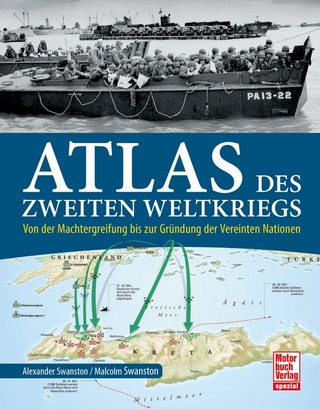
The First Atomic Bomb
An Alternate History of the Ending of WW2
Seiten
2022
Frontline Books (Verlag)
978-1-3990-0981-2 (ISBN)
Frontline Books (Verlag)
978-1-3990-0981-2 (ISBN)
A highly accurate, thoroughly researched, alternate history.
While German and Japanese scientists also laboured unsuccessfully to create an atomic bomb, by the summer of 1945, the American-led team was ready to test its first weapon. As the clock ticked down to the detonation time of 05.30 hours on 16 July 1945, the nervous team of technicians and scientists waited ten miles away from Ground Zero' deep in the New Mexico desert. No one knew how powerful the explosion would be or whether even at such a distance they would be safe from the blast. Even so, some chose to observe the detonation from a point four miles nearer at the control bunker; but then no one was even sure that the bomb would work.
What if that is actually what happened? Under schedule pressure from the White House, the scientists assembled the device in part with tape and tissue paper, knowing some components were flawed. These are verifiable facts. It means that, as many of those who gathered in the New Mexico desert feared at the time, the bomb might not have worked during that first test.
In The First Atomic Bomb, Jim Mangi explores what might happened in the event that the world's first atomic bomb had not been ready for use when it was. How would this have affected the end of the war in the Pacific, and indeed the Second World War as a whole?
Would Emperor Hirohito's armed forces have battled on? When might Colonel Paul W. Tibbets, at the controls of his Boeing B-24 Superfortress Enola Gay have then made his historic flight over Hiroshima - and would that city even have remained the target? How would Stalin and the Soviets have reacted to such developments, and how would this have played out in the post-war world?
While German and Japanese scientists also laboured unsuccessfully to create an atomic bomb, by the summer of 1945, the American-led team was ready to test its first weapon. As the clock ticked down to the detonation time of 05.30 hours on 16 July 1945, the nervous team of technicians and scientists waited ten miles away from Ground Zero' deep in the New Mexico desert. No one knew how powerful the explosion would be or whether even at such a distance they would be safe from the blast. Even so, some chose to observe the detonation from a point four miles nearer at the control bunker; but then no one was even sure that the bomb would work.
What if that is actually what happened? Under schedule pressure from the White House, the scientists assembled the device in part with tape and tissue paper, knowing some components were flawed. These are verifiable facts. It means that, as many of those who gathered in the New Mexico desert feared at the time, the bomb might not have worked during that first test.
In The First Atomic Bomb, Jim Mangi explores what might happened in the event that the world's first atomic bomb had not been ready for use when it was. How would this have affected the end of the war in the Pacific, and indeed the Second World War as a whole?
Would Emperor Hirohito's armed forces have battled on? When might Colonel Paul W. Tibbets, at the controls of his Boeing B-24 Superfortress Enola Gay have then made his historic flight over Hiroshima - and would that city even have remained the target? How would Stalin and the Soviets have reacted to such developments, and how would this have played out in the post-war world?
After somewhat accidentally volunteering for, and serving in Vietnam, JIM MANGI earned a PhD in ecology and spent 40 years in the professional What If? business. The consulting firm he built traced the effects of planned projects on the environment and communities. Besides civil projects like power plants and factories, he worked on military projects ranging from battle tanks, to combat aircraft, to ICBM's and space vehicles, some of which he can talk about. Jim now lives in Michigan, USA where he chairs Dementia Friendly Saline and is a caregiver for his wife.
| Erscheinungsdatum | 10.08.2022 |
|---|---|
| Zusatzinfo | 37 black and white illustrations & 41 black and white maps |
| Verlagsort | Barnsley |
| Sprache | englisch |
| Maße | 156 x 234 mm |
| Themenwelt | Natur / Technik ► Fahrzeuge / Flugzeuge / Schiffe ► Militärfahrzeuge / -flugzeuge / -schiffe |
| Geschichte ► Allgemeine Geschichte ► 1918 bis 1945 | |
| Geschichte ► Teilgebiete der Geschichte ► Militärgeschichte | |
| Sozialwissenschaften ► Politik / Verwaltung | |
| Technik | |
| ISBN-10 | 1-3990-0981-8 / 1399009818 |
| ISBN-13 | 978-1-3990-0981-2 / 9781399009812 |
| Zustand | Neuware |
| Informationen gemäß Produktsicherheitsverordnung (GPSR) | |
| Haben Sie eine Frage zum Produkt? |
Mehr entdecken
aus dem Bereich
aus dem Bereich
von der Machtergreifung bis zur Gründung der Vereinten Nationen
Buch | Softcover (2023)
Motorbuch Verlag
24,90 €


